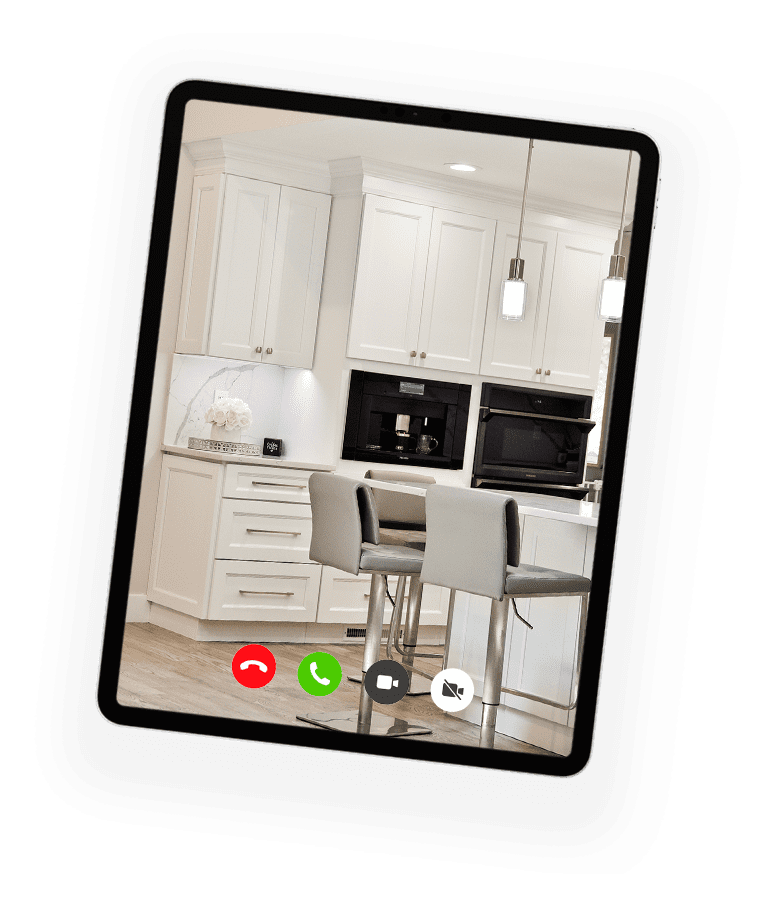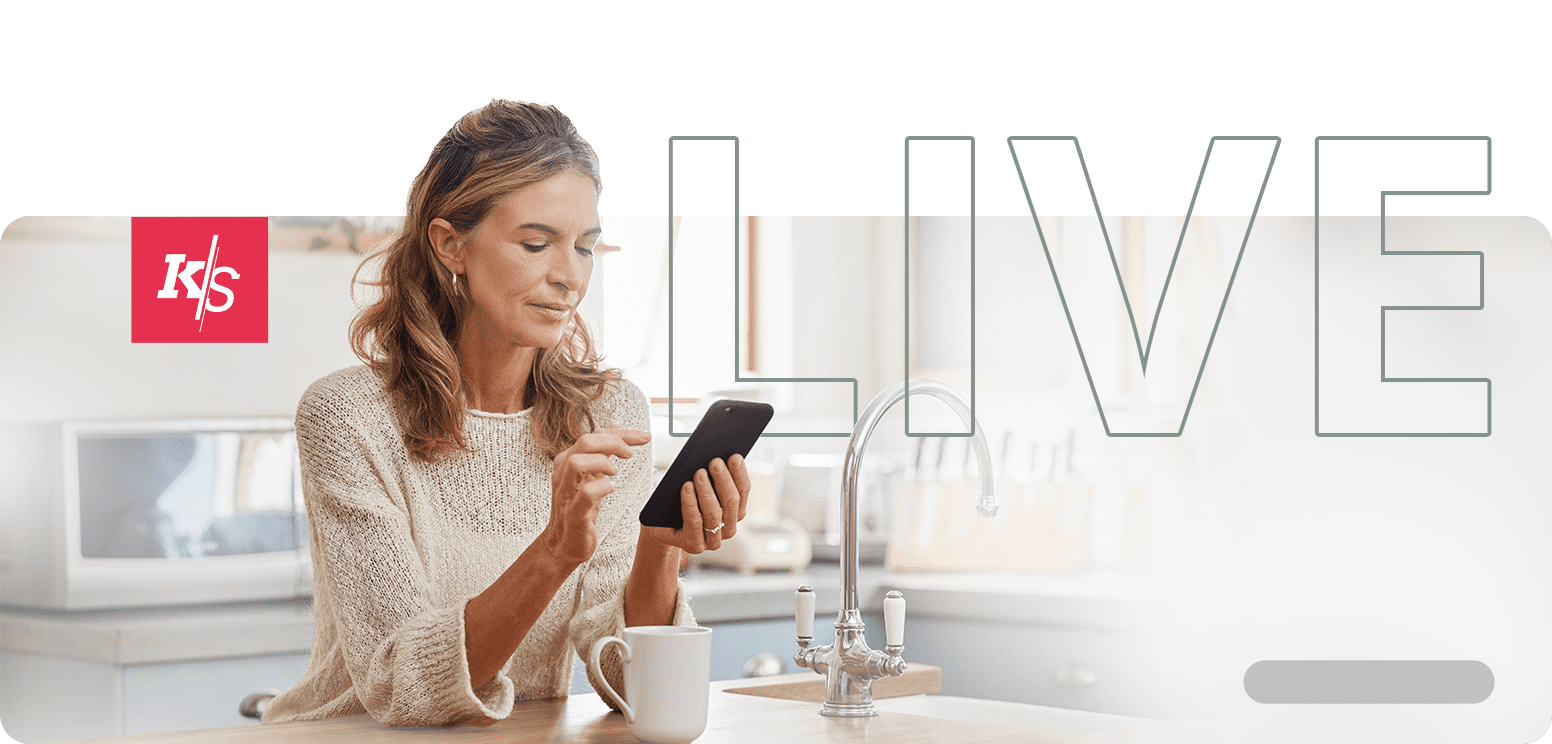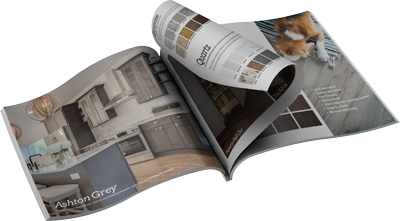Why Custom Cabinets Are Worth the Investment
What Makes Custom Cabinets “Custom”?
When you’re remodeling your kitchen and considering custom kitchen cabinets cost, the term “custom cabinets” means these are built from the ground up for your space. Instead of selecting from standard‑sized shelves and boxes, a custom cabinet project gives you a tailored solution for your layout, your storage needs, your style. You aren’t limited to the standard sizes used in stock cabinets or even the limited flexibility of semi custom options. Every dimension, every cabinet depth, every cabinet door style can be specified, along with details like crown molding to enhance the aesthetic appeal.
The Key Differences: Custom vs Semi‑Custom vs Stock Cabinets
Understanding custom cabinet pricing means knowing how it compares to other cabinet types. Stock cabinets come ready‑made, in fixed sizes and finishes, which keeps cost down but limits design flexibility. Semi custom options offer more size and finish choices but still rely on standard modules. Fully custom cabinets offer the highest level of personalization and quality, which means higher total cost but also higher value.
Why Homeowners Choose Custom
Many homeowners choose custom cabinetry because they want a kitchen that fits exactly how they live. If you have odd wall angles, a large island, a built‑in pantry, or specific storage needs like pull out shelves, custom cabinets provide that solution. They also bring quality materials and craftsmanship, which contribute to long‑term durability and aesthetic appeal. Custom cabinets add unique features and finishes that can’t be found in stock or semi custom options, making them a worthwhile investment. This is true not only for kitchen cabinets but also for bathroom cabinets, laundry room storage, and even garage cabinets.
Average Cost of Custom Kitchen Cabinets in 2025
 National Average Range: $500–$1,200 Per Linear Foot
National Average Range: $500–$1,200 Per Linear Foot
For fully custom cabinetry, recent data shows pricing typically falls in the range of $500 to $1,200 per linear foot. This “per linear foot” pricing means measuring the length of wall run (upper + lower cabinets) and applying a rate based on material, complexity, features, and location.
Full Kitchen Estimates: $12,000 to $30,000+
Putting that into context for an average‑sized kitchen: If you have, say, 20 linear feet of cabinetry and you select custom designs at $800/linear foot, the cabinet cost alone would be around $16,000. Larger kitchens with premium materials and specialty features (like custom pantry cabinets, built‑in garage cabinets, special hardware, or integrated appliances) can push the total project cost of custom kitchen cabinets well above $30,000.
What “Per Linear Foot” Really Means for Your Budget
“Linear foot” refers to one foot of length in your cabinet run. If you have 15 ft of kitchen cabinets along one wall and 10 ft on another, that equals 25 linear feet. Multiply by custom cabinet pricing (for example $900/linear foot) gives the baseline for your cabinetry cost. Then you add labor costs, installation cost, custom hardware, specialty features like soft close hinges, pull out shelves, integrated lighting, crown molding, and other upgrades. This is how homeowners understand how much do custom cabinets cost in real dollar terms.
8 Key Factors That Affect the Cost of Custom Cabinets
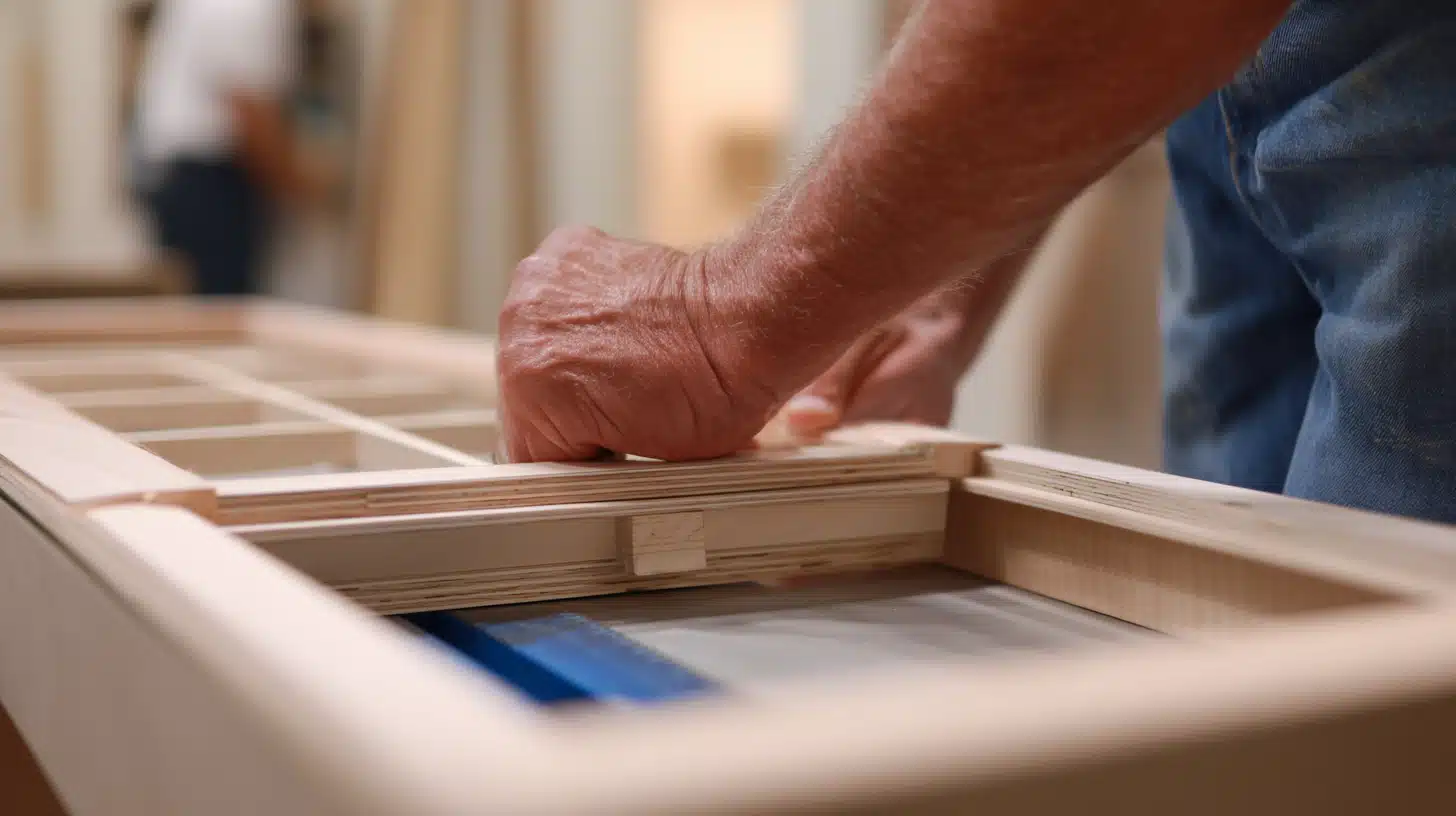 1. Material Choice and Quality
1. Material Choice and Quality
One of the biggest influences on custom kitchen cabinets cost is the material. Premium woods (for example white oak, cherry, walnut) cost more than MDF or plywood frames with veneer. Data show that material cost per linear foot for custom cabinetry using mid‑range woods might be $300‑$400, while premium species can run $500‑$700 or more per linear foot. Choosing durable materials is part of investing in a high‑quality product, but it pushes the budget higher.
2. Door Style and Finish
Door style (inset vs overlay vs frameless), finish type (paint vs stain vs lacquer), and decorative details (like crown molding) can all add cost. A simple slab door will cost less; an intricate raised panel with custom finishes and trim will increase both materials and labor expenses significantly.
3. Hardware and Accessories
Even after the basic cabinet boxes and doors are specified, custom hardware choices, soft close hardware, drawer organizers, appliance panels, spice racks, and other specialty features add to the custom cabinetry project cost. Every extra feature adds materials, time, and precision.
4. Cabinet Layout, Size and Cabinet Depth
The size of your kitchen (its square footage), number of cabinets, number of linear feet, kitchen shape, island inclusion, and height/depth of cabinets all affect cost. More complicated shapes, corners, deeper cabinets or taller ceilings mean more labor and often custom fabrication. That increases your final price tag.
5. Labor Costs & Installation Cost
Hiring cabinet makers and skilled installers is an essential part of a high‑end custom cabinet job. Labor costs vary by region, but installation cost can account for a significant portion of the project. Some guidelines show labor/installation cost may be in the range of $150 to $500 per linear foot for semi‑custom, and $500 to $1,200 per linear foot when everything is custom.
6. Specialty Features and Built‑Ins
If your custom cabinet project includes built‑in components like a custom pantry cabinets wall, garage cabinets, hidden compartments, or integrated appliance panels, these specialty features add cost. They also add real value and function. Complexity leads to higher price.
7. Region, Market Trends and Supply Chain Factors
In 2025, many homeowners are seeing higher material costs and longer lead times for fully custom cabinetry. Supply chain fluctuations, skilled labor shortages, and rising demand all contribute to higher custom cabinet pricing than in previous years.
8. Design Complexity and Aesthetic Appeal
The more custom the design (curved cabinets, special finishes, high‑end materials, integrated lighting, hidden storage), the higher the cost. Choosing simpler layouts or more “standard” features lowers the price, but part of the reason to choose custom cabinets is to get that tailored look and personalized design that matches your lifestyle and taste.
Cost Comparison: Custom vs Semi‑Custom vs Stock Cabinets
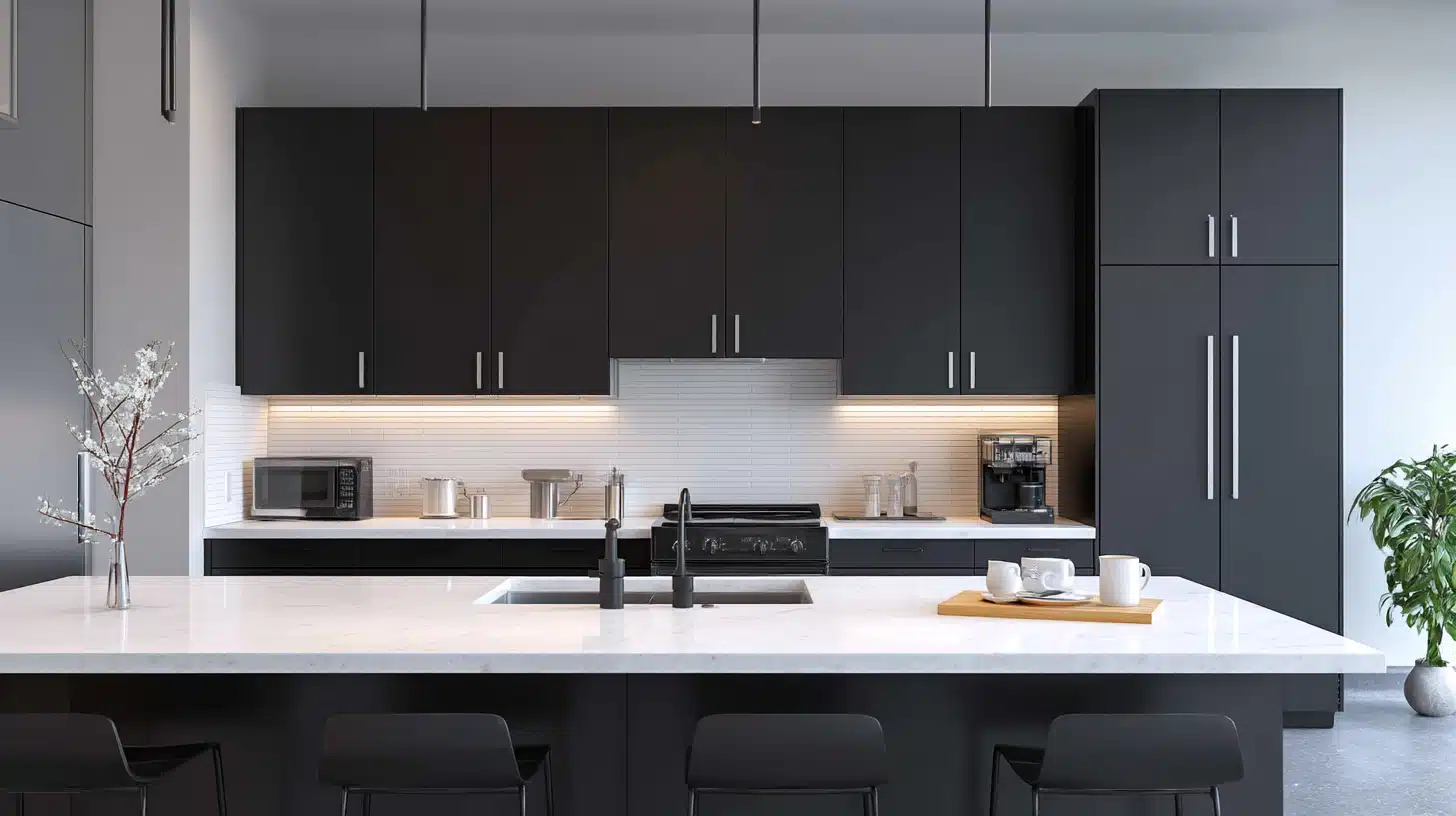 Cost per Linear Foot Breakdown
Cost per Linear Foot Breakdown
- Stock cabinets (lowest cost): ~ $100‑$300 per linear foot installed.
- Semi custom options (mid‑tier): ~ $150‑$650 per linear foot installed.
- Fully custom cabinets (highest tier): ~ $500‑$1,200+ per linear foot installed.
Quality and Lifespan Considerations
While stock cabinets cost less, they are typically made with lower‑cost materials and limited customization. Semi custom options offer a balance between cost and personalization. Fully custom cabinetry offers the best fit for your space, higher durability, and higher resale value, but comes with a higher price tag.
When Is It Worth Upgrading to Custom?
If you have unusual dimensions or want a high‑end finish, or if you want premium materials and perfect fit, then the investment in fully custom cabinets is worth it. If your budget is tighter or you have simpler needs, semi custom or stock cabinets may provide the best cost effective solution with less risk of sacrificing quality.
Real Budget Scenarios: What Homeowners Should Expect
Example 1: Small Kitchen, Budget‑Friendly Custom – ~$14,000
Imagine an average sized kitchen with 15‑20 linear feet of cabinetry, using mid‑grade materials and simpler door styles, with some custom hardware but minimal built‑ins. That serviceable custom cabinet project might land in the $12,000‑$18,000 range.
Example 2: Medium Kitchen, Mid‑Range Options – ~$22,000
For 20‑30 linear feet, higher quality materials (solid wood fronts, nicer hardware, maybe a pantry or built‑in appliance panel), expect something in the $20,000‑$25,000 range.
Example 3: Large Kitchen, Premium Build – $30,000+
With 30+ linear feet, high‑end materials like cherry or white oak, speciality features (custom pantry cabinets, hidden compartments, integrated lighting), and a complex layout, you’re easily in the $30,000‑$40,000 or more realm.
Why These Variations Happen
Because your total cost depends on number of linear feet, material choice, layout complexity, specialty features, labor rates, installation cost, and the region. All these key cost factors affect the final number.
How to Save on Custom Cabinet Costs Without Compromising Quality
 Choose Cost‑Effective Materials
Choose Cost‑Effective Materials
Opt for materials that strike a balance, such as MDF boxes with solid wood door fronts instead of full solid wood construction. Use more economical woods for less visible cabinetry and save premium woods for focal points.
Simplify Your Cabinet Layout
Avoid overly complex layouts with excessive corners, curved cabinets, or non‑standard cabinet depths unless needed. Reducing complexity reduces labor and material waste.
Mix Custom and Semi‑Custom Strategically
You might choose fully custom cabinets for the central run or focal wall, and semi custom options for secondary areas. This lowers cost while still getting the bespoke design in key areas.
Reuse Existing Cabinets or Alter Only Cabinet Doors
If your existing cabinets are in good shape, you might just replace the cabinet doors, drawers, and hardware, and keep cabinet boxes. This reduces cost of a full cabinet replacement.
Work with a Direct‑to‑Consumer Custom Cabinet Company
Working directly with quality cabinet makers who specialize in custom cabinetry can give you better value than going through multiple layers of sales mark‑ups.
Get Multiple Quotes
Because pricing varies so much depending on region and complexity, get multiple quotes so you understand custom cabinet pricing in your market. Comparing helps ensure you aren’t overpaying.
2025 Kitchen Remodeling Trends That Influence Cabinet Design and Cost
Minimalist, Slab‑Front Designs
Sleek, flat door styles with minimal hardware are popular in 2025 and can sometimes reduce cost because they simplify the build, but if high‑gloss finishes or specialty materials are used, cost may still be high.
Two‑Tone Cabinets and High Contrast Finishes
Combining dark lower cabinets with light uppers or mixing materials is popular. That often means custom design and special finishes, which can increase custom cabinetry cost.
Sustainable, Eco‑Friendly Materials
Homeowners increasingly opt for environmentally friendly woods, low‑VOC finishes, or reclaimed materials. These may cost more up front but speak to long‑term value and lifestyle.
Hidden Storage Solutions & Built‑Ins
More clients request hidden compartments, under‑toe‑kick drawers, built‑in appliance garages, integrated lighting built into shelving, all of which raise custom cabinet pricing but deliver superior function.
Laundry Room & Garage Cabinet Integration
Kitchens often flow into adjoining spaces, and custom pantry cabinets or even garage cabinets that match the kitchen finish are part of the trend. Expanding the custom cabinetry project into these areas raises overall investment.
Final Thoughts: Are Custom Cabinets Right for Your Kitchen?
If you’re looking for a kitchen that reflects how you live, maximizes every inch of storage, uses premium materials, and creates a standout aesthetic, investing in custom cabinetry makes sense. It comes at a higher upfront cost, but the tailored solution, durability, and the “right‑fit” feeling often justify the investment. On the other hand, if your kitchen space is standard, your budget limited, or you’re fine with good quality but not absolute bespoke detail, then semi custom options or even high‑quality stock cabinets may deliver better value without sacrificing visual appeal.
The most important thing is your careful consideration of budget, layout, material choices, and timeframe. Understanding custom cabinet pricing, knowing how many linear feet you need, and recognizing the key factors that affect cost give you control.
Your kitchen remodel deserves cabinetry that fits both your life and your budget. You don’t need to sacrifice quality; you just need to specify wisely and select the right partner.
FAQs About Custom Kitchen Cabinet Costs
How much should I budget for cabinets in a kitchen remodel?
Typically cabinets account for about 25‑40 % of your total kitchen remodel budget. If you know your total kitchen remodel budget is $50,000, expect around $12,000‑$20,000 might be for the cabinetry portion including installation.
Are custom cabinets more expensive than semi‑custom?
Yes, custom cabinets cost significantly more than semi custom or stock cabinets, because they are built from scratch, with tailored dimensions, finishes, and style options. The cost of custom cabinetry is higher but you get maximum fit, design freedom, and premium materials.
What’s the most affordable wood for custom cabinets?
For a custom cabinet project looking to manage cost, woods like MDF or birch or painted maple are more cost effective materials. Using premium species increases custom cabinet pricing but not every part of your layout needs the most expensive material.
Can I install custom cabinets myself to save money?
While it’s possible to self‑install, building and installing custom cabinetry properly requires precision, proper anchoring, alignment, and fit. Mistakes in installing custom kitchen cabinets or custom pantry cabinets can lead to gaps, mis‑alignment, and may void manufacturer warranties. Hiring professionals is recommended for best results.
How long does it take to build and install custom cabinets?
Lead times for custom kitchen cabinets in 2025 vary widely depending on the maker, complexity, materials, and finish. Many projects report lead times of 10‑14 weeks or more for full custom builds. Installation may take several days to a week depending on kitchen size, complexity of the layout and features.
Ready to Get a Custom Cabinet Quote?
Every home is different. If you’re ready to explore how custom cabinets can transform your space, let’s compare options, layout your kitchen, define your features, and create a budget you’re comfortable with. Whether it’s custom kitchen cabinets, custom pantry cabinets, bathroom cabinets, or even garage cabinets that match your main space, we’ll guide you through materials, labor costs, installation options, and design decisions so your cabinetry investment delivers long‑term value.





